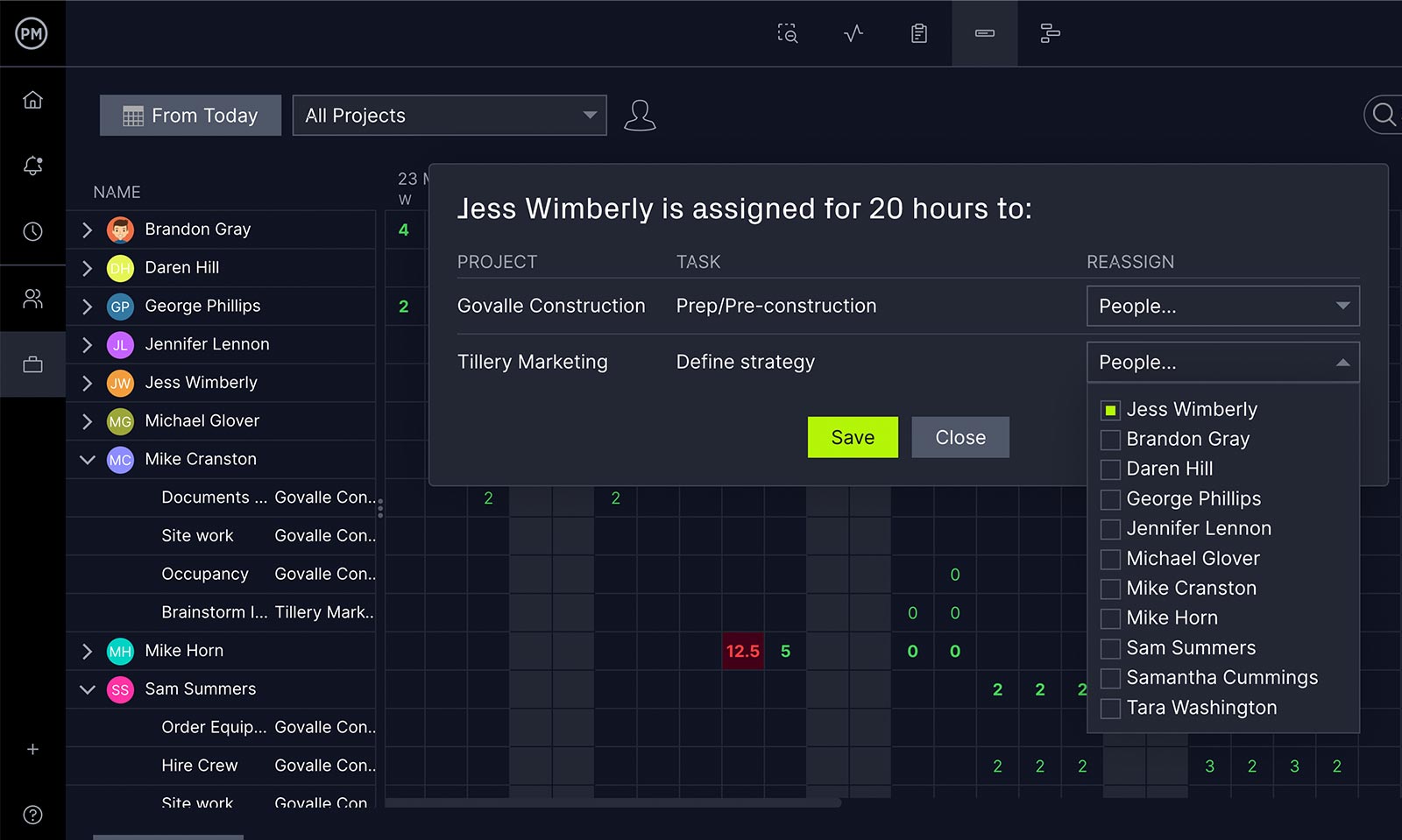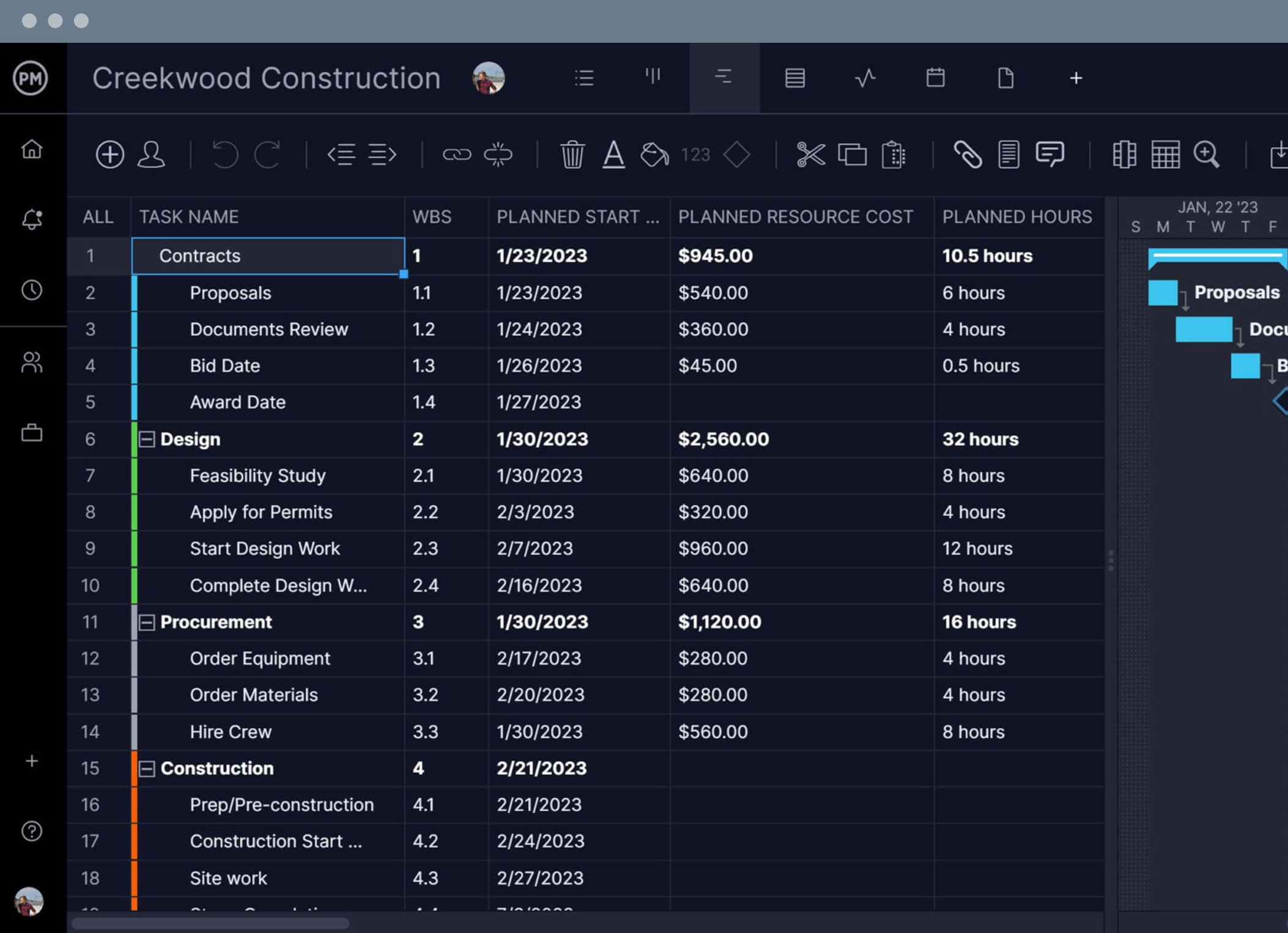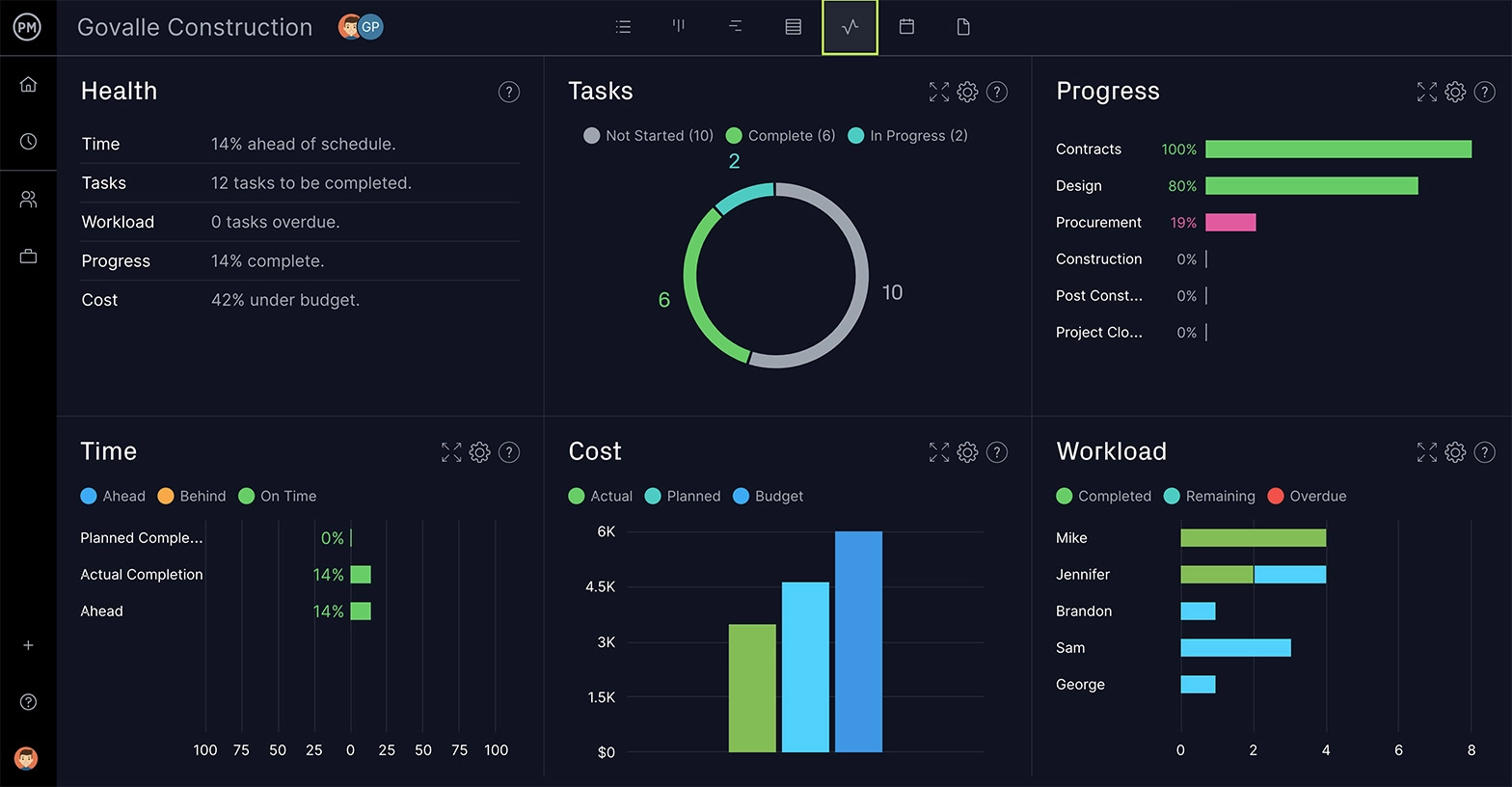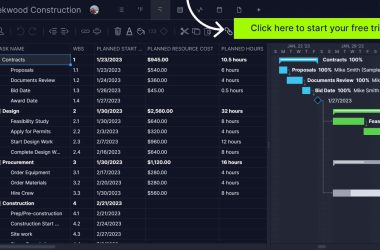Projects require many resources. Everything from the people you’re working with and the equipment they’re using, to the materials and other supplies you need to even the site where you’re working falls under the umbrella of project resource allocation. Let’s explore what resource allocation is, why it’s so important for project management and what tools you can use to better allocate your project resources.
What Is Resource Allocation In Project Management?
Resource allocation is the process of scheduling resources such as labor, materials or equipment for the completion of project tasks. Resource allocation is a step of project resource management that involves estimating resources, procuring resources, allocating resources and tracking resources until the project is completed.
Once you’ve identified your resources and you’re ready to allocate them to tasks, add them to your project management software. That way you can coordinate them with your project schedule and distribute them across your team. In ProjectManager for instance, you can manage your project schedule, your team and your non-human resources in one place. Build your schedule on a Gantt and track your resource distribution, progress and labor costs in one software. Try it free today!
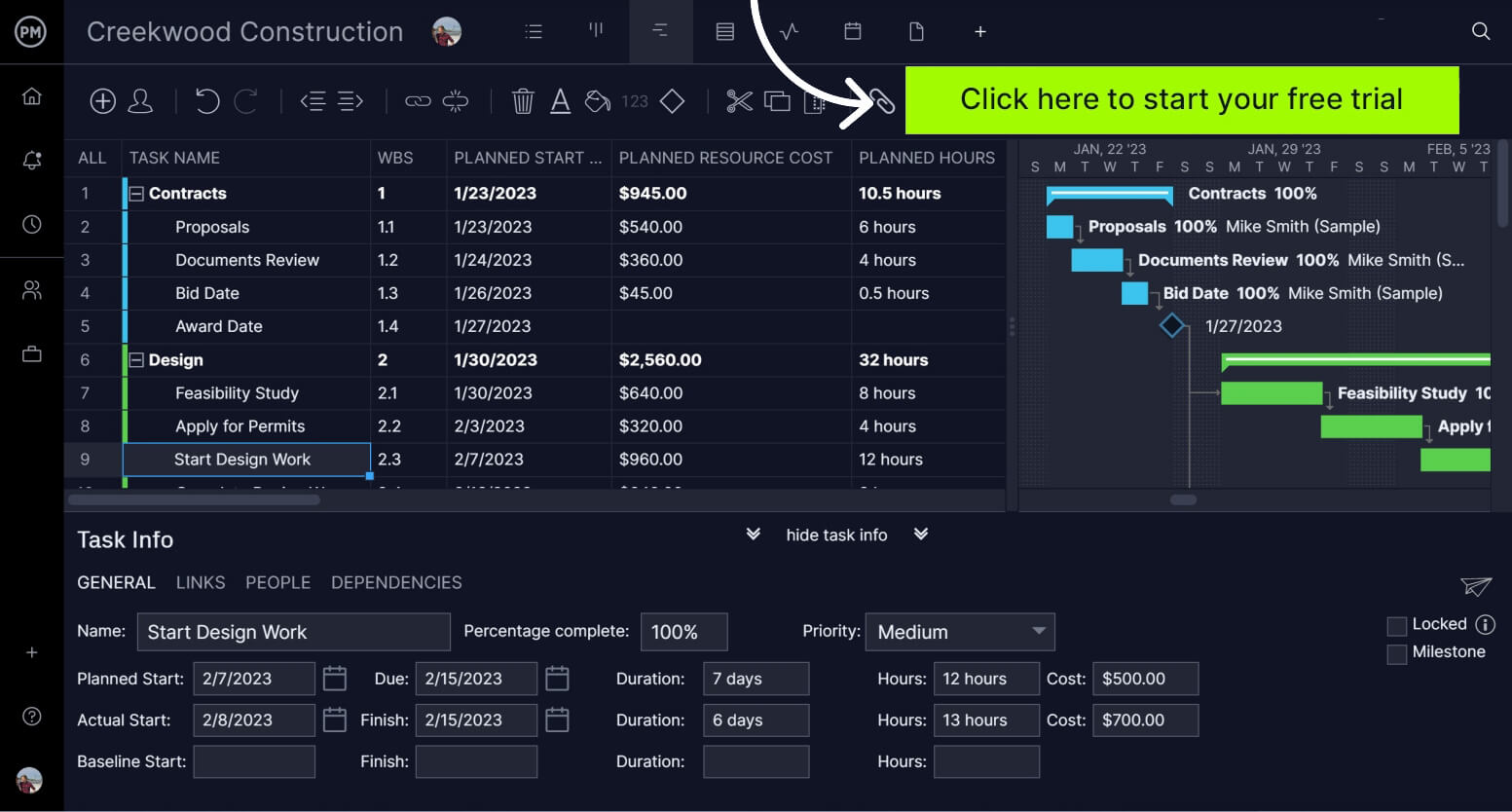
Why Is Resource Allocation Important In Project Management?
As difficult as it might be to allocate resources correctly over the life cycle of a project, it’s an essential part of any thorough project management plan and should be done in the planning stage of a project. This keeps costs down, maximizes productivity and helps with team morale. It also facilitates client satisfaction by achieving the best outcome and successfully delivering the project.
What Is a Resource Allocation Plan?
A resource allocation plan is a list of the needed resources to complete any particular project. It outlines the resources required, the timing of when you’ll need them and the cost and quality of each resource. When putting together your resource allocation plan, it needs to align with your project’s budget, scope and schedule to be successful.
What Is a Resource Allocator?
A resource allocator ensures that resources are utilized strategically. It helps allocate resources in the most efficient and effective way possible to ultimately maximize both productivity and profitability for your organization.
Resource allocators could mean making decisions about how to prioritize tasks or projects or helping departments or teams best utilize resources. The goal is to ensure that resources are spent as efficiently as possible.
Resource Allocation Methods
The specific resource allocation method that your organization implements depends on your industry and the nature of how resources are managed. For example, manufacturing companies might focus on raw materials and equipment while a professional services company might focus on team utilization and financial resources.
Regardless, it’s important to balance resource allocation with involved stakeholders. This could include teams, departments, customers, shareholders and other stakeholders.
We’ve outlined some commonly utilized resource allocation methods for you to consider.
Critical Path Method
If your project has time constraints, using the critical path method (CPM) for resource allocation is ideal. It determines both the earliest and latest possible start and finish dates for a project, factoring in that:
- Some project tasks are dependent on others
- The first task needs to be started early to ensure the others are completed by the intended deadline
In project management, the longest chain of dependent tasks is referred to as the critical path. By outlining a straightforward priority for task completion before the project starts, the CPM helps use resources as efficiently as possible. However, one criticism is that this method doesn’t allow for multitasking.
Resource Leveling
During this resource allocation method, the project manager will modify the project schedule based on resource availability. This means changing the start and end dates as needed. It gives the project team the chance to effectively allocate resources without the tight schedule that can result in burnout.
To implement resource leveling, start by looking at the capacity of your team to determine how much work they can handle. Compare this with demand. If resources aren’t aligned with demand, reschedule tasks accordingly. Keep in mind that only certain types of projects are suitable for this approach and those with strict deadlines will likely want to seek an alternative.
Resource Smoothing
Different than resource leveling, resource smoothing aims to reduce demand while executing the project within the ideal timeframe. During this method, the project manager makes adjustments to resource scheduling and allocation. Some instances require bringing in more resources to complete the project.
In many cases, resource smoothing occurs without the project manager realizing it. For example, if you’re under a time crunch, you might bring on a more seasoned person who can complete the work faster.
Resource Allocation Tools
Now that we’ve explained some popular resource allocation methods, let’s examine some of the tools that project managers can use along the way.
Resource Allocation Matrix
A resource allocation matrix is an overview of the needed project resources. It helps to identify any potential bottlenecks or imbalances ahead of time. Typically, the matrix includes the names and roles of each team member, their availability, and their skills and tasks on the project. It acts as a visual representation of your resources mapped against project tasks and activities.
For a convenient way to create a resource allocation matrix, you can utilize our free resource plan template for Excel. This free resource breaks down resources into two categories: storable and non-storable. Use our template to lay out your resources to ensure they align with your project’s schedule and budget.
Resource Breakdown Structure
Another tool often used in resource allocation is a resource breakdown structure (RBS). This is a hierarchical chart of the resources needed to execute your project and it includes everything from the people needed for the project to what you’ll be spending your money on. This can include materials, equipment, people, project management tools and more. A project manager will create an RBS during the planning phase of the project.
Gantt Charts
Online Gantt charts are an easy way to map the required project tasks and note dependencies. You’ll be able to see and schedule your resources across a project timeline so you know exactly when you’ll need each resource. Once you’ve identified your tasks, you can assign them on the Gantt chart and see how long each team member has spent working on each task. Use the Gantt chart to see if any adjustments are needed as the project unfolds.
Workload Charts
Tracking human resources is easiest on workload charts. These charts visually represent your resource allocation for your project team, department or entire company. You can see how many hours each person has been assigned and make adjustments to ensure your team is working at capacity without getting bogged down. Use it to quickly determine how your human resource management is aligning with your planned resource allocation.
Project Dashboards
Having a real-time dashboard is an important resource allocation tool. It shows you data across various facets of your project including workload, progress, tasks, cost, time and more. Use dashboards for a high-level overview and to catch problems before they snowball into more serious issues.
Resource Allocation Process: How to Allocate Project Resources
Resource allocation is a plan that you develop with the aim of making the most of the available resources at your disposal in a project, which makes it a critical resource planning activity. This is mostly a short-term plan set in place to achieve goals in the future.
This sounds challenging, but don’t worry, we’re here to help. The following are some general tips to help you with your resource allocation when managing a project.
1. Define Your Project Scope
Before you can allocate your resources or manage them, you have to determine the scope of the project you’re working on. Is it a big or small project, long or short?
Once you’ve answered those questions, then you can make the right decision on what resources you’ll need and how many of them are necessary to complete the project.
The clearer the project scope is, the better you’ll be able to figure out how to allocate your resources. Take the time to get the full picture of the project prior to doing any resource allocation.
2. Estimate What Project Resources Will Be Needed
You know the scope, objective and tasks for your project needed to be on time and within the budget approved, now you have to get your resources together.
So, you have to estimate what resources will be needed including people, equipment, materials and anything else you’re going to need to complete your project tasks. Your organization will have some of these resources already, while others will need to be purchased or rented.
Before you can allocate resources, you have to have them. So, make a list using the criteria above and then make sure it fits within the project budget.
3. Assess Your Current Resource Utilization & Resource Availability
Now that you’ve determined what resources are required for your project, you should also identify which of those resources are available within your organization. However, some existing resources might be being used for other projects, so it’s important that you not only identify which resources your organization has but also which of those are being utilized.

Get your free
Resource Plan Template
Use this free Resource Plan Template for Excel to manage your projects better.
4. Create a Resource Allocation Plan
Take the information that you’ve gained from the above steps to put together a resource allocation plan. Outline the list of resources you’ll need for your project as well as the cost and quantity of each. When you’re finished, circle back to your project scope to make sure your plan aligns with it.
5. Keep Track of Your Project Resources
It’s a problem when you’re so focused on the process that you neglect to lift your head up from the resource allocation plan to note what’s actually happening. This isn’t merely checking your estimates against actual progress in the project, though that’s important, too.
You should always be aware of the state of your resources. For example, what’s the schedule for your team, are any taking vacation time, are they sick, etc.? Also, what’s the duration of the lease for the site or equipment? These are important questions to ask when scheduling resources.
Don’t let any of these details get past you because of tunnel vision. Look at the whole project, not just the various pieces.
6. Use Resource Reports
You can reallocate if you don’t know where your resources are allocated. You might have planned them out well, but change happens in projects. How can you tell what’s happening on the ground compared to your plans? Reports.
You can generate all sorts of reports to give you a full picture of the project and how it’s progressing, which helps you balance your resources. For example, resource reports give you an overview of your team’s workload and whether they’re over-tasked or idle.
Task reports keep you updated and variance reports help you determine whether the project is proceeding as planned. The latter gives you vital information, such as if you’re behind schedule and need to redistribute the work to get back on track.
Resource Allocation Example
Let’s say you’re a manager for an IT organization and you’re tasked with hiring an architect for an upcoming project. You know the importance of an architect position to the overall success of the project but you know that they’re usually an expensive hire.
You’ll need to consider if it makes more sense to hire an architect for a specific project or if you want to assign him or her to multiple projects. You can utilize resource allocation tools to determine what makes the most financial sense for your organization.
Resource Allocation Tips
Even though there may be blind spots when managing resources, there are some tips to keep in mind to help you allocate resources as effectively as possible.
Know Your Resource Dependencies
By planning beforehand, you can avoid bottlenecks that trap your resources when you need them most in the course of the project execution. Planning also helps you keep your resources from falling short. This doesn’t mean you won’t have a bottleneck or resource shortage, but it’s less likely if you know your resource dependencies.
Part of planning for dependencies is having a contingency plan in place in case team members are blocked or you run low on needed resources. Keep your plans from being over-dependent on one resource to avoid trouble down the line.
Track Time
You always want to keep a close eye on the time, how your team is working and if they’re being efficient. It’s your job to make sure that a task that can be completed in a day doesn’t take a week. There are ways to improve time tracking.
To do this, you must keep track of your team’s workload. That requires the right tools to give you real-time data collected on one page where you can both see and schedule ahead when needed.
Use Resource Allocation Tools
Project management software, like ProjectManager, is a great asset for managing your resources more productively. With an online tool, you get project data instantly updated.
You can see where your resources are allocated across a calendar that’s color-coded to note whether they’re on- or off-task, on vacation or sick. Rescheduling to help a team member who is overtasked is a simple click of the keyboard.
Free Resource Allocation Templates
Resources allocation requires accurate and timely data to avoid bottlenecks that can slow down your project. Project management software is the most efficient way to manage your resources, but if you don’t have an online resource management tool there are templates that can help. ProjectManager has free templates for every phase of your project, including ones to help with resource allocation. Here are a few.
Requirement Gathering Template
Before you can allocate your resources, you need to understand what’s required. The free requirement gathering template for Word acts as a means of communication between the stakeholders and the project team. This ensures quality deliverables that meet specifications.
RACI Matrix Template
You’ll also need to organize your resources before you can properly allocate them. Our free RACI matrix template for Excel is a place where you can define the roles and responsibilities of the team members. RACI stands for responsible, accountable, consulted and informed, and the free template helps you place everyone involved in the project within one of those quadrants.
Resource Plan Template
Now you’re ready to build a resource plan to help you manage your resource allocation. Our free resource plan template for Excel lists all the resources you’ll need for the project, how much each will cost and a monthly, weekly or daily chart of when you’ll need them. This helps you organize and schedule your resources; each tab on the template can be customized to match your production schedule.
How to Allocate Resources With ProjectManager
ProjectManager is robust project management software with multiple tools that allow project managers to allocate project resources, track utilization and availability, control costs and deliver project success. Regardless of how you prefer to manage and schedule your resources, ProjectManager has the tools to help you every step of the way. Here are some of our most popular resource management features.
Schedule Resources With Multiple Planning Tools
Tools such as Gantt charts, kanban boards, task lists and project calendars allow you to allocate resources in multiple ways. Create visual timelines on Gantt charts that let you easily assign the needed resources for each project task or create task lists that make it easy to stay on track. In addition, ProjectManager’s workload charts help you plan and oversee each team member’s workload at a glance so you can keep your team working at capacity.
Track Costs With Project Dashboards & Timesheets
Once you’ve allocated your project resources, you’ll need to track their costs to ensure that you’re sticking to your budget. ProjectManager’s real-time dashboards make it easy to monitor costs, timelines and progress so nothing is overlooked. Use the dashboard to make timely updates and catch problems before they snowball. In addition, you can use our project timesheets to help you keep track of labor costs.
If you’re looking for a project management tool that can help you implement those tips and manage your resources properly, then look no further. ProjectManager has all the features mentioned above to help you manage your resources, and it’s online software, which means the information you’re working with is in real time. See how it can help you by taking this free 30-day trial today!
The post What Is Resource Allocation? Resource Allocation in Project Management appeared first on ProjectManager.


